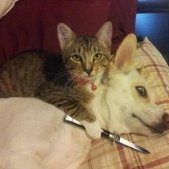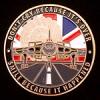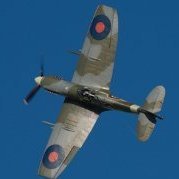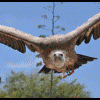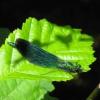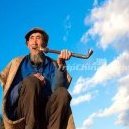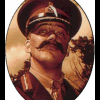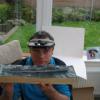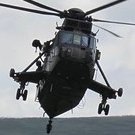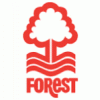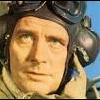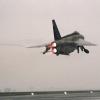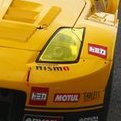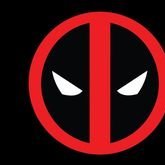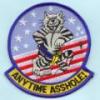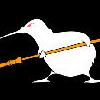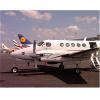Leaderboard
Popular Content
Showing content with the highest reputation on 21/01/18 in Posts
-
On the 18th May 1988 Rich Lepman, a US exchange pilot assigned to the Tigers, was lined up on the runway at the annual APC at RAF Akrotiri with his back seater Steve Smyth. They were part of a pairs take off for the sortie flying F-4J(uk) ZE362/V with a standard gun pod fitted. The start of the take off sequence went smoothly and as normal, but just as the Phantom went into V1, the front canopy detached much to the surprise of the crew. They then had to flying around for 20 minutes Phantom Cabriolet style until the runway was cleared of debris and a normal landing was made. Thanks for looking.35 points
-
Hello folks, Again an Airfix Skyhawk! There is no after-market items used but a little of scratch for the cockpit, flaps and few details. The bombs are Hasegawa mk-83. Hope you like it, cheers29 points
-
RAF Britannia C1 XM496 'Regulus' 26 Models kit, 1/144. The bus is an Oxford diecasts 'N' gauge model. Since seeing Ian Turbofan's and Dave Skoadriver's lovely Roden Britannias, I thought I must get one. Well here we are! This is from Ray at 26 decals, who sells several versions of the Roden kit with various option of his own decal sheets, all a bargain price. Rather than a civvy scheme I opted for this RAF version as I have happy memories of seeing them at Brize Norton in the 70's on several trips with the Air Cadets. As Ian and Dave pointed out, the kit is a real beauty, one of the best airliner kits available. I chose XM496 simply because it is the only genuine RAF Britannia still in existence. the only mods I made were to add a small teardrop blister on the underside between the wings. I struggled to find references, and just 'eyeballed' it from photos cutting up a 1/72 bomb to make the shape.. It meant that the underside 'towel rail' aerials were relocated to the top, again located according to photos. The underside 'teardrop'; I also opened up the cockpit area and scratched up some basic detail, as I was masking the cockpit glazing to leave it clear. The windows are so tiny, that I might not bother to do it again. So what next? I've got this lined up. Airfix VC10 with Braz Super VC10 conversion. Some guidance would be appreciated here, I think all I need is the leading edge extensions and engines/pylons, & some wing fences. The RAF VC10's were standard fuselages with these other 'Super' fittings right? Cheers John22 points
-
This is Airfix's new Mustang finished as the mount of S/L Witold Tokuciewski of 303 Sqn. It was originally going to be in a RNZAF scheme but the black & yellow chequerboards on the fuselage sides disintegrated & curled up so, in the words of Wile E Coyote, back to the old drawing board. In the end I used Kagero's Mustangs over Europe, part 1, I also used Eduard's Zoom set for the cockpit. The kit goes together well but looks a little odd when you open the box due to the clever way it is engineered. This is my first attempt at NMF, I used AK Interactive paints which performed well although the black base was a bit patchy - but that was probably me. Next NMF aircraft will be the Eduard Mirage III. Any comments or criticisms welcome as always. Thanks for looking. Pete19 points
-
This is an A-model 1/72 scale KA-26 Hungarian crop duster. Lots of scratch building. Fuel control levers were added, rotor control locks were added in the cockpit as were tape for the seat belts. The rotor assembly was practically rebuilt, control tubes and pitch change links were all replaced by styrene rod. The lifting ring on top of the rotor head was made be a curved piece of wire. The spray bars were built and added, using sprue rod and tiny cut pieces of plastic rod for the spray nozzles. Scale rope was used as the pressure lines to the spray bars while thread was used to simulate the high pressure line to the rear spray bar. The pesticide bin was made from a Testor's Clear Glue cap and reinforced with styrene rod to look like weld. A drive shaft was added to power the pump at the bottom of the bin as were some odds and ends for the loading port. I also opened one of the pods and used a 1/144th radial engine to recreate the 325 hp (239 kW) Vedeneyev M-14V-26 radial engine. I also added copper wire strands to replicate the fire detection system on the inner engine panel. It was then heavily weathered to replicate oil stains. See the link below to see why! Whew! (Side note: My kit caused a squabble among the contest judges, as they never saw a helicopter like this before, so I was awarded silver. However, the gentleman who built the V-22 Osprey seen in the back ground was president of an IPMS chapter and a master modeler himself, told the judges they got it wrong. He then forfeited his first place gold to me! That, in itself, was the greatest compliment I ever received in modelling!) This is one small model helicopter!16 points
-
Hi folks Nakajima Type 97 KATE B5N2 Japanese Carrier Torpedo Bomber kit is from Hasegawa a rebox of Mania tooling of 70s, but then being dated doesn't mean it is bad, it is sophisticated and holds up till now. Instructions were simple and construction was smooth, just that it needs little filler near the wings. I used Humbrol and Tamiya for the paints. I rendered the aircraft with heavy chipping to show it has extensive service. Hope it has turned out ok. Thanks15 points
-
All finished!Nice "little" build. Weathering finished off with AK Interactive pigments. Still getting the hang of them, but getting better. Mainly painted with Hataka Orange Line paints. Set off on a Coastal Kits Display Base. Ian G-2 by ian gaskell, on Flickr Ian G-2 by ian gaskell, on Flickr Ian G-2 by ian gaskell, on Flickr Ian G-2 by ian gaskell, on Flickr Ian G-2 by ian gaskell, on Flickr Ian G-2 by ian gaskell, on Flickr Ian G-2 by ian gaskell, on Flickr Ian G-2 by ian gaskell, on Flickr Ian G-2 by ian gaskell, on Flickr Ian G-2 by ian gaskell, on Flickr14 points
-
A kit that has been lurking in the stash for a while. Decent enough but I did have trouble lining up the engines and wings to the fuselage. And it needs huge amounts of weight in the nose. Finished in Vallejo Modelair silver and white. Quite a big aeroplane, almost the size of the Nimrod I finished a few weeks ago. 1. 2. 3. 4.13 points
-
SAM-2 kit from Trumpeter, scale 1/35, anti-aircraft missile on semi-trailer mounted behind the ZIL vehicle. Used patina - oil paints, Tamiya pigments.13 points
-
Hasegawa 1/48 plus Eduard, Master and CMK resin. Camo - Major Edward Rector - Flying Tigers - 76 F.S. 23 F.G. China july 1942.12 points
-
Hi all, here's my latest, the Airfix 1/48 Seafire MK XVII. good kit, just replaced the exhausts with resin once from Quickboost. I held back on the weathering as it is a trainer, and I assumed that they would be kept clean. (And my salt weathering didn't quite work out lol)12 points
-
In my haste to start my 6pdr gun and carrier - I forgot to do my RFI for the Sherman Firefly that I finished in the run up to Christmas. This was a MASSIVELY enjoyable build. The PSC KIT is designed for wargamers - but is great for an AFV beginner like me. It simply fell together and all I had to do was drill a few lifting hook holes and find something to make aerials with. With the Sherman GB going on at present - don't be confused - this isn't part of that - it's just a bit of pre Christmas fun... ...and if you were wondering how we got here - here is the WIP thread... I hope you like it and thanks for taking a look - Steve11 points
-
Rescued this one from the bottom of the stash as I felt sorry for it. Decals were useless but luckily I had a spare set from a later 'Nose Art' boxing. Actually not a bad kit for its age, its wheels look a bit crude by modern standards and cockpit was a bit bare but otherwise it looks like a P-47 to me. Pilot is was a spare from a 'crashed' aircraft. I had to spend a lot of time polishing out the scratched canopy but I think it was worth the effort. As per norm, Vallejo model air paints.11 points
-
Just finished this one, build out of box, with DP Casper decals from the pakistani/India war. cheers Jes11 points
-
Unusual aircraft. Kit was very nice to build, a bit of flash in places which hindered fit, however, these were soon dealt with with a scalpel or sanding stick. I built the kit out of the box. Only added some home made seat belts in the cockpit. The kit allows for large panels to be left off to show off the gun bays and engine. I didnt want to leave too much off the engine area so I cut out small access panels to expose the detail. The gun bay access hatch I wasnt sure if it was removed completely or hinged up like a Me 262. Decided to add a bit of brass wire as a prop and have the access hatch hinged up for interest. The national marking were painted using home made masks. This is a really tall aircraft when you add the landing gear. DSC_0063 by Richard Page, on Flickr P1210003 by Richard Page, on Flickr DSC_0062 by Richard Page, on Flickr DSC_0067 by Richard Page, on Flickr DSC_0068 by Richard Page, on Flickr DSC_0069 by Richard Page, on Flickr DSC_0070 by Richard Page, on Flickr DSC_0071 by Richard Page, on Flickr DSC_0071 by Richard Page, on Flickr DSC_0078 by Richard Page, on Flickr10 points
-
Just finished this one build out of the box, for my Vietnam collection. Just refined the decals a bit to show the as on real thing. cheers Jes10 points
-
Dear Colleagues After 3 years work off and on I finally finished the beast. You are looking at the 1/700 Fujimi kit of Kaga from late 1941 with Fujimi’s own PE and wood planking extra. Then it is dressed with Veteran models 12.7 cm AA guns, Lion Roar 25 mm AA guns, davits, Nanodread life boats and searchlights, Rainbow launches (I could go on). The sponson supports are largely scratch built. I am particularly proud of the Zeros waiting to take off. Rather than use decals these were spray painted using my own home-made masks. She was originally designed to be a battleship but following the limits of the Washington Treaty was converted to an aircraft carrier in 1933 initially with 2 flying off decks but this was then changed to having two enclosed hanger decks in 1935. In line with the doctrine of the time she retained a battery of 8" guns for self defence. With Akagi she formed the 1st Carrier Division which struck at Pearl Harbour. She was sunk at Midway in 1942. Hope you like it? Andrew9 points
-
A little light amusement for the new year... I had this lovely little Airfix kit sat in the stash and decided to do it in the style of those lovely P51 racing planes in bare metal. A quick search on the internet and I couldn't find any real examples of the mark being used for racing, so I decided to make it up! The kit went together very easily and I removed the guns from the wings and the front cowling. I was quickly at a stage where it was time to start applying the finishes. The metal is good old kitchen foil and is fixed using Micro Metal Foil Adhesive. This is brushed onto the foil and left to go tacky. The first problem I had was getting the adhesive to stay on the foil - it was forming little pools rather than staying evenly spread. I solved this by adding a very tiny amount of washing up liquid to break the surface tension. The first piece I applied looked like corrugated iron! Brush marks in the glue showed very clearly. I removed it and washed the glue off the model and tried again. A softer, finer brush and brushing in various directions cured the problem. Once the foil was applied and rubbed in using cotton buds and a cocktail stick I burnished the whole model with very fine wire wool. A few coats of clear sealed the foil. I've set the plane wheels up and mounted it on a good old Airfix stand. The pilot is not the kit original but a more contemporary one from a jet kit. I thought a dayglo helmet was appropriate! I hope you like it!9 points
-
Yes it does! And I definitely like not having to blend in the vertical fin since there is a slight gap on the real TSR.2, being an all-moving rudder and all. Which reminds me, does anyone else see some similarities with the A-5 Vigilante? Thanks guys. Memsahib always wonders why the cleanliness of my model builds never transfers over to other tasks, say, housekeeping for instance. Beats me. So, on to THE faux pas of the Airfix TSR.2 kits. You know what I mean (cue music from Twilight Zone) the splay angle. Named after Dr Norbert Splay, famous for over zealous bandy leg surgical repairs. Most of what I've read concern the 1:48 scale kit, but I've seen a few references to it for the little guy here as well. Apparently, Airfix used a splay angle of 21 degrees instead of the actual 18 degrees. To verify, I inserted the main gear legs into the resin gear bay (they won't fit without a small modification - more evidence, I think, that CMK never actually built the model using their aftermarket pieces), took a photo and measured using the angular dimension tool in Corel Draw: Yup, that's 21 degrees on each leg. But what I noticed was that the legs are actually a bit loose, once I got them to slide into the gear bay. The modification that I had to make was just a little notch so that the legs would clear the orange boxes as you can see here: Since the legs had some wiggle room, I figured I see how much. I took a twist tie and squeezed the legs together at their base, took another photo and made another measurement. Well, isn't that interesting. I also measured the "track" or width across the two legs and found that the difference between the two angles resulted in a 4mm difference in the track. Obviously a smaller angle yields a smaller track. In any event, the 38 degree position is only off by 1 degree on each leg, and quite possibly is something that can be lived with. Alternately, making the legs a bit more wiggly would allow setting to the real figure of 36 degrees (18 degrees per leg). Fixing the splay angle this way will result in the axles where the bogie assemblies attach to not be horizontal. I believe this can be fixed and/or adjusted during assembly of the main gear using a jig. Now, those of you who did not drink an entire bottle of single malt this afternoon will recall that I have on order a set of the SAC white metal legs. I've never used these before, but photos make me suspect they're just copies of the kit parts. However, SAC have claimed that the 1:48 scale set correct the splay angle, so perhaps the 1:72 set does as well. But - let me give you my opinion based on looking at sets of SAC white metal legs at a recent model show. The detail looks very soft, and quite frankly I didn't care for it. We'll see what the TSR set look like when they get here, but if they look the same I don't expect I'll be using them. And I also don't think the weight of this model, even with all the resin, is going to create any problem for the styrene landing gear. The main legs are pretty hefty. That big chunk of resin for the bomb bay and gear wells? It weighs one ounce (28g). Not exactly a brick! Time for my nap... Cheers, Bill9 points
-
! have the process of uploading pictures under the knee now -as we dutch say- meaning: I know now how to upload pictures. let me see now if I can place them on the place of my choice ,meaning here ,reasdy for inspection department. I intend to show my 1/72 supermodel pipistrello. an austere kit but I 'm not unhappy with the result .was built in 2016 summer,if I remember well. PS ,I forgot to tell something important ,when trying the metod of camoufaging above ,if you try yourselves ,put the maskol on while changing repeatedly from left wing and reverse fter having finshed a part of a wing . it is much easier to keep the camouflage symmetric on both wings! and and and and and in a not too distant future I hope to have better pictures to show here but I am only practizing my uploads technics ,is my [pretty lame] excuse for the poor quality. I became member of this forum pretty un-expectedly i saw on britmodeller an omega De Monge M-101 C2 -a copy of a Koolhoven FK.31 that I have built myself,exactly tthe same kit and real aircraft- built by someone who was not very enthousiastic about those omega kits . me on the contrary like them very much -most are not very expensive if not bought at hannants or aviation megastore- and have quite a lot of them ,built and in my stash [they have a loverly collection kits from early dutch airforce, many fokkers that fkew in the LVA=early dutch airforce up to ww2 ,being ftom holland they have a special appeal to me] . and know a place where you can buy them for about half the price one has to pay at hannants [google with the words "omega kits" and you will fimd without problem,or ask me]or aviation megastore.andI wanted to share with him that knowledge en show him my omega kits ,to let him know what an not very professional builder can make of those kits .for doing those things I had to become a member of this forum and voila ,here I am ,please to meet you all!9 points
-
Hi, This is the Airfix 1/72 model of the Boulton Paul Defiant painted to represent the one flown by Squadron Leader Gatheral, officer commanding 256 Squadron in May 1941. The model was firstly sprayed grey followed by a loose spray coat of black by which I tried to recreate a slightly weathered look. The decals used were a combination of the kit decals, which to be honest were rather thick and didn't really seat correctly plus odds and sods from model decal sheets. Boulton Paul Defiant I, No N3500, coded JT-B, took of from its base at Squires Gate near Blackpool on the 8th May 1941 at 00.20 hours to carry out a night fighter sortie in the Liverpool area, the aircraft was piloted by Squadron Leader G. H. Gatheral the Squadron Commanding Officer and his air gunner was Flying Officer D. S. Wallen. A JU88 was spotted at 16,000 feet and the rear gunner opened fire from 100 yards registering hits on the fuselage being the wing root. Unfortunately the Defiant was hit in the glycol tank by return fire and the cockpit and turret filled with liquid and fumes. The pilot and gunner baled out and the aircraft crashed in flames near St. Helens. I hope you like it, Russ9 points
-
Bee securely lodged in bonnet about the next stage of canopy building, so I figured I'd work through lunch tomorrow to make up for stolen bench time today. Windscreen methodolgy Layer of low-tack tape over transparency, marked out with windscreen shape using originals as blank: A couple of trim/test repeat cycles, and then epoxied into place: Total time on this occasion = 20 mins. Even beginning to resemble a canopy now, albeit one recovering from substantive cosmetic surgery: As on the side windows, I left that front a tad long where it meets the fuselage in order to allow for a final trim when fixing the canopy on as a whole. Another day for that to cure and then onto the remaining triangular corner windows later in the week. As to what goes under that construction - time to admit that I'm not going to be happy until we've rearranged the innards somewhat. Before: After: Initial removal handled with a grinding disc in the Dremel, then a mixture of contour sawing and planing down flat with an handheld Stanley blade. I'm coming to rely on that latter technique more and more at this scale for getting a smooth, responsive finish. You'll not be surprised to observe I also took the opportunity to whip out the mountings for Nav. and Radio Op. positions - didn't think there was any point half-doing the job. IP bunged in with some White-tak to pencil-in a level for relocation of the rudder pedals further forwards: You can really start to see the difference in positioning now can't you? Taking this shot as a reference for the in-flight positioning of the seats themselves: ...I played around with the positioning of the modified kit seat and a PJ figure in order to recreate the same relative separation 'twixt pilot and IP: An overhead view shows the difference ion the new positioning of the seats for flight: That new level has been pencilled in for the seats now as well: Busy few days ahead as the pace picks up at work so that's why I wanted to cram that in today, being able to head into the maelstrom feeling that this was now set up for the next set of cockpit-related tasks. And yes, I've managed to break the top of the rear bulkhead off AGAIN for the fourth time. It can stay off now until it's time to paint.... Have a good Sunday. Tony9 points
-
Hi guys, another year, hope you're all fighting fit and raring to go. This is a pre-production build of the new Airfix B-25C/D Mitchell that I finished in November for the January issue of Airfix Model World magazine. A great little model of a very impressive aircraft. There were a couple of issues with this example though, one possibly to do with the pre-production nature of the kit, the other more a simple fix really. On this example, the height of the right side of the rear fuselage where the tailplane sits was some 2mm higher than the left which meant that the horizontal tail sat at an odd angle. Some simple, but careful filing of the fuselage top surface was needed to bring everything into line and hopefully, this problem is only restricted to this example, but it's something to look out for. The other issue concerned the location of the main gear legs which is a tad suspect as the leg just clips into a shallow trough on the undercarriage roof which led to a decidedly wobbly assembly, especially with those big balloon tyres. The easy answer was to add a couple of brass rods to each leg to stabilise the parts. Thankfully these are hidden inside the nacelles and can't be seen from the outside. I realise this doesn't sound ideal for a new release particularly in regard to folks new to the sport but hopefully, full production kits will improve on things. The rest of the kit is good though as ever some details aren't quite correct such as the fact that Desert Warrior had a .50 cal position in the lower right position in the nose glazing meaning that I had to drill out the glazing and fit a gun from the spares box. The canopy pilots side window had a noticeable flow line so was removed and an acetate replacement added. This, in turn, meant I could have the window open adding a bit more interest. Decals are good and went on without issue and the choice of markings was definitely interesting. Optional parts are included for the two versions including engine nacelles, dropped or raised flaps, positionable flying surfaces and different windscreen framing. The bomb bay is nicely rendered as are the four 500 lb bombs complete with stencil markings. Look forward to the RAF Mitchell II later in the year... Hope you like it. Cheers Melchie8 points
-
Cheers Nigel, I did think about it TBH but changed my mind on the wipers So a first pass with some primer, this is just to check any imperfections of which there are a few, I have to revisit some joins and some filled areas as they are a little rough. Then a get another top coat of primer on and a polish up before the riveting job Enjoy Dan8 points
-
that is not product placement that is just my messy workbench Any how this is what i have done so far NATO black in Micky mouse pattern and used a dark green mottle over the OB instead of the Khaki beefy8 points
-
Now then <using Brian Clough voice> I will brook none of that talk here young man. Reality takes an awful bashing at my hands too Ced - which is why it's so great on here to have the likes of Crisp and Steve (who have actually made the real thing go whoosh and whirr from the pilot's seat) along with the expert engineering eyes of Bill the file Ian the wood Tomo the miniature Keith the wise hendie the kitbaiter Johnny the paint <in fact just insert name of everyone who's commented on my work to complete the list> All of whom have served to point out my countless errors and misconceptions along the way Remember when I stuck the cargo hold for this together back-to-front not so long ago? Not mentioning my stalled plans for a kitbash between a Heninkel and a Lancaster - the Heincaster (rare as hen's teats) Oh yea my brother, and there was rejoicing upon the land: Quite by accident I almost entirely failed to get glue all over the transparencies: The epoxy seems to have done the trick, so I want to have a go at building the windscreens as a single unit next, leaving the triangular corner windows until last. To say that I'm pleased/relieved would be an understatement - as long as I'm careful in not exerting any undue pressure (gluing, masking, demasking &etc.), the glue bonds seems nice and secure for the task in hand: to be paranoid I'm going to give it another few hours to fully cure before gluing the aforementioned windscreens on next. If I punch this shot up again: You can see that the framing of the windows themselves would lend itself quite nicely to the use of strips of adhesive metal foil with the rivetting tool run across it just prior to painting. Right. I think that's earned a third Belgian waffle. What do these two herberts want? Ah, it's milk o'clock that's what.... I've another hour or two of prepping stuff for work tomorrow morning and then I want to put such cares behind me for an hour or two at the bench. Hope to catch you this afternoon/evening. Tony8 points
-
Some more filler on top of the nacelles Untitled by jongwinnett, on Flickr and I have started to add the bomb bay gubbins Untitled by jongwinnett, on Flickr As seen earlier, the central divider needed some plastic strip to pack the gaps (still to be trimmed at the front when set) Untitled by jongwinnett, on Flickr And I've started on the bombs, but they weren't very well moulded. I need a suggestion for the mustard colour, or would they be green by Autumn 1940? Untitled by jongwinnett, on Flickr Such precision modelling (!?!) needs precision tools. Untitled by jongwinnett, on Flickr thats enough for tonight, I'm off to watch Where Eagles Dare and drink the precision tools...8 points
-
'Feller could have a pretty good weekend in Vegas with all that sterfff....' Thanks Moneypenny....Err..I mean Q. Until now, it hasn't been necessary.... Until now. Too late anyway : That sounds perfect hendie, for exactly the reasons you outline vis-a-vis strength and texture. I haven't smoked for over 15 years however and with tabs at about €12 for 20 here I shall have to seek a source at work. Great suggestion! After a snooze earlier I carried on investigating the cockpit as from viewing videos (in order to get a better sense of space than static photographs alone can give) I convinced now that there are issues with what Italeri have done inside here regarding the arrangement of features. I'd mentioned earlier about suspecting two issues: that the pilot and co-pilot seats were positioned as if scooted back for access and not correct for a flying posture. that the rudder pedals were too far back from the IP. With one of the PJ Productions' transport pilots in place, these problems leap into focus. Too much separation between seat and rudder pedals: Plus rudder pedals at least 5mm too far back from IP: This seems pretty conclusive to me that some urgent medical attention is needed to bring the Pelican back to full health: To the left is the current kit positioning of these items, to the right, a visualization of what I think needs attention - the red line indicating the need for both pilot's seats and mountings to move forward by 7mm or so, and the rudders by at least 5mm, so that they are under the IP. In flying mode the pilot's knees should be broadly in line with the rear edge of the drum-like throttle/flap quadrant (the bit cut out at present in the shots above). I should say that Italeri are not at fault regarding the positioning of the seats by any means - for an aircraft on the ground that is - when it seems natural enough for them to be scooted back along the rails. In the shot below you can see the pilot's seat displaced back in contrast to co-pilot's one still forward enough for flying: The spatial relationship between rudder pedals and IP is definitely wrong though IMO. Well then. Rudder pedals are coming off, along with the chair mounts that will have to be redone from scratch. I've made a start on the IP: That region is not completely open around the rudder pedals so you need to be careful if cutting out this part- there is a central divider between each set of pedals and a triangular framework extending out from the lower sides of the IP to the cockpit wall on either side, like so: I should be able to rustle up some replacement pedals from brass, but don't be expecting the Fairchild logo on 'em... Night all.8 points
-
Airfix Be2C built straight from the box, only addition is Uschi Van Der Rosten rigging ( Superfine 0.001mm-super duper thin!) White was Halfords spray, everything else brush painted with Vallejo acrylics. Weathering with Games Workshop washes/inks Still needs a couple of bits of tidying up, but putting it aside after all the rigging!! Temporary base for photography, will get proper base done with figures at somepoint. Very impressed with the engineering of this kit, very nice build7 points
-
Something else I am beavering away with. Hi planes boxed kit of Academy F-86 and a new fuselage plus decals fro RAAF Avon Sabres. Here, there is a huge square hole wher the upper vent should be. The Hi Planes tell you to box it up. Which I did and filled with filler to blend the fit. Then carved open the vent... The wing to fuselage fit is a bit fiddly but does fit after some careful trimming and post fixing blending. From the top, the new fuselage parts in the kit. Then the work I carried out cutting away the jet pipe are from the Academy plastic and the Hi Planes plastic. Reason being the ACA one has a good 'bulkhead' to fix the tail pipe to where as the Hi Planes one doesn't. Just nothing there for it to fix to in the right place. So I basically followed the panel lines that are identical between the kit parts and did the 'op'! Reinforced the fixing with strip plastic to the inside and minimal blending on the out side. The rest of the build is pretty much straight forward. Note the cockpit parts fit reasonably well and are moulded as a tub with sidewalls as opposed to the very vague way the Hobbycraft kit! I have also(not seen here) altered the 'square' dive brakes to replicate the correct shape of the original. So, so far its at painting stage. Just need to find a suitable silver dope paint . Tried Humbrol no.11 and it comes out quite dull( see the Vampire in background in one of the pics). I have some Tamiya silver but its far too 'glittery' for my liking. And I have used up all my AK metallic for other builds.7 points
-
Eduard's now OOP 1/48 Fokker E.V, built mostly OOB save for the gorgeous Master turned brass MG cooling jackets and barrels. Lovely little kit, although getting the wing straight & level was a PITA. Constructive criticism welcome! Cheers, Tony Bell7 points
-
I've had this kit in the stash for some time, but also now have the much more up to date Kinetic kit. I therefore decided to take a flight of fancy and do it as a What If USAF ANG aircraft re-engined with a P&W F-100 taken from a kaput F-15E kit (together with the ACES II seat). Painted with Hataka Orange Line paints, weathering being a Flory Models dark dirt wash, and Tamiya Smoke. Decals came from an Eagle strike set. TBH this build has helped keep my head straight as my brother was diagnosed with terminal cancer just before Christmas, and passed away last Tuesday at the age of 56, can't tell you how torn up i am about this, but messing with bits of plastic and visiting forums such as this does help. Anyway enough waffle, here's a few pics (one day I will sort a proper set up for taking pics!): Mirage 2000C ‘what if’ by bryn robinson, on Flickr Mirage 2000C ‘what if’ by bryn robinson, on Flickr Mirage 2000C ‘what if’ by bryn robinson, on Flickr Mirage 2000C ‘what if’ by bryn robinson, on Flickr Mirage 2000C ‘what if’ by bryn robinson, on Flickr7 points
-
Another one that I have cleared off the shelf and finally finished. The lovely Airfix Supermarine Swift FR.5. Built as WK281 and flown by Flight Lieutenant Nigel Walpole, No. 79 Sqn, RAF Germany, Gutersloh, April 1956. I am almost reaching the stage where I can start building for myself and actually keep the model....!!! Cheers all, Phil7 points
-
Stay up late, pop the kettle on and turn on the TV. There’s bound to be a product on one of those infomercials that’ll do the job and the fast talking seller might also throw in a sharp set of steak knives. Let’s be honest, the cleaning agent won’t do a thing, but the sharp knives might soften the blow when they get thrown at you from a short distance. She will also take that solo cruise, however that’s planned to find a ‘non-modelling’ 2nd hubby!! Good luck - your gonna need it! By the way, what’s in your stash?? Cheers.. Dave7 points
-
Adding the grab handles around the Observers window, I used the Aber tie down set as these looked close enough to use for them. They still need cleaning up a little with a fibre glass pencil to remove some of the CA glue around the join. Cheers Dan7 points
-
Thanks guys, a little more done today, still snotty but I think I’m on the mend. proper modelling weather over our way, snow/sleet/rain. ‘orrible. so here’s where we’re at. flory wash on. And mid way through rubbing it off again. Aaaand all off. nice and subtle, just picking out the panel lined and details. I did a Matt coat before removing the lower masks. That little red decal on the wing has confirmed beautifully. the nose ring went on, I just have to paint a bit of glare strip on it. I should have done that before gluing but what you gonna do? the lower masks are off. I must now spend at least some time with the other inhabitants of the house. I tidied up and wrote what I thought were the last few steps to completion. ok I give it a few more weeks then. See y’all later. hope you’re having a super weekend. Johnny Lightning.7 points
-
Happy Birthday Britmodeller! I intend to join the party with the Takom 1/35 Chieftain Mk.10. The Chieftain was the United Kingdom's first Main Battle Tank, which entered service in 1966. It sported a 120mm rifled L11A5 gun and impressive armour. During initial design of the Chieftain NATO specified that all new tanks should have multi fuel engines which could run off of pretty much any combustible liquids. Britain was the only country which followed this guideline, and the Chieftain was equiped with the Leyland L60 multi fuel engine. The concept of the engine was good but it turned out to be extremely unreliable. Despite reliability issues the Cheiftain was arguably the best tank of the Cold War era. In 1985 the Mk.10 entered service. The main modification of this mark was the introduction of StillBrew armour. This armour package saw the thickness of the armour increase significantly to counter more modern soviet weaponry. The profile of the tank changed due to this making it look a lot more aggressive. In my opinion this was the greatest Mark of the Chieftain and would extend its lifespan into the 1990s. I will be modelling this kit in the Berlin Brigade scheme as per the box art. It consisted of large blocks of white, grey and brown which proved to be very effective in an urban environment. I will be building straight out of the box. As you will see in the photos you get an awful lot of plastic and PE for your money. It seems to be very well moulded and on high quality plastic. First impressions are very good. Feel free to comment or question along the way, hopefully you will enjoy the build and will joy me for it. It has taken me some time to pluck the courage to start this one so wish me luck!6 points
-
I picked this up for £2 at a charity thing. Couldn't bear to see it sit there, badly made and unloved. After some effort getting it apart (some was put together with superglue but there's no substitute for an hour or two in the freezer to make things brittle), I got it in bits. The battery compartment in the Airfix original needed a lot of hacking and cutting to make the proportions correct - the original amount of room between the driver and the steering wheel was entirely physically impossible to drive. The original is painted red, it's just been done in such a way as to remain looking like red plastic.6 points
-
Edit 3.2. Silly me, I had already started one thread for this build... Despite having the HMS Ariadne not finished, I want to do this little gem more than anything! I bought it last year from a well known British used kit dealer. I believe it's a first edition kit, as it has a different kind of boxing I never encountered in a Matchbox kit before. Enough text, here are before beginning- pics. I sure miss these Matchbox painting instructions! So, I started by spicing up the interior a bit, actually just filling in some holes. I'll add some pieces missing from the kit, like the gunsight, aileron balances and the head armour, from my 109 spares box. If I build her legs down, I'm tempted in using spare AZ wheels too (just compare the details there and you see why..). Best regards, V-P6 points
-
Greetings, members of the resistance. Fine Molds 1/48 X-Wing has been brutally tickled into a rendition of Luke's ride. Sadly, Revell's decals don't measure up to the eye watering 70 odd beer vouchers indicated on the box being pixilated, stiff and impervious to anything south of a welder's torch, so the markings were rendered in paint. Notwithstanding the decals, the kit's a ton of fun. Bare Metal foil was used for the oleos. Come in Red 5... Happy days Steve6 points
-
#1/2017 So, finally also my dad has finished his first model in the new year, continuing the Near/Middle East theme with an IAF Meteor that fought during the Suez Crisis in 1956. The Meteors were Israel´s first jet aircraft, therefore they served in the No.117 Squadron, also called the "First Jet Squadron". Airfix kit, Isradecals, Vallejo Metal Color Aluminium, antennas on spine are scratch. DSC_0001 by Reinhard Spreitzhofer, auf Flickr DSC_0003 by Reinhard Spreitzhofer, auf Flickr DSC_0004 by Reinhard Spreitzhofer, auf Flickr DSC_0005 by Reinhard Spreitzhofer, auf Flickr DSC_0006 by Reinhard Spreitzhofer, auf Flickr DSC_0007 by Reinhard Spreitzhofer, auf Flickr DSC_0008 by Reinhard Spreitzhofer, auf Flickr DSC_0009 by Reinhard Spreitzhofer, auf Flickr DSC_0010 by Reinhard Spreitzhofer, auf Flickr DSC_0011 by Reinhard Spreitzhofer, auf Flickr DSC_0012 by Reinhard Spreitzhofer, auf Flickr DSC_0013 by Reinhard Spreitzhofer, auf Flickr DSC_0014 by Reinhard Spreitzhofer, auf Flickr DSC_0015 by Reinhard Spreitzhofer, auf Flickr DSC_0016 by Reinhard Spreitzhofer, auf Flickr DSC_0017 by Reinhard Spreitzhofer, auf Flickr DSC_0018 by Reinhard Spreitzhofer, auf Flickr DSC_0019 by Reinhard Spreitzhofer, auf Flickr DSC_0020 by Reinhard Spreitzhofer, auf Flickr6 points
-
Good bit of progress. The hull was painted, glossed with tools and decals added: Lower hull and running gear was all painted, with decals added: Both were then given a wash: Tracks added, with dry brushing around the return rollers, bogies and wheels to bring up some of the detail: More staining/weathering etc will be added later on. I then added the lower and upper parts before adding the majority of the kit. Each item was painted and weathered individually before being added: Again, more weathering etc to be added toward the end. Quite happy with how it looks so far. A couple of hours was also spent on the SAS jeep: Just a few more bits to add to that then it will be ready for paint. Some of the kit that will be going on/in the jeep: Next up will to be finish the jeep, along with the turret of the Sherman. More soon. Dave6 points
-
Started to get the paint down now. The DE/DG is on and I've just finished masking up ready to apply the night black The decals are coming from Xtradecal and Ventura generic sets To get the wavy demarcation line, I rolled a thick piece of blutac and used a razor saw handle to press the waves in6 points
-
Hi guys and gales Its Wings and Things time!.....the worst stage for any scratch build in my opinion! The thing is ....attaching the wings can be the make or break of the model....not so bad for a kit as everything is totally lined up for the connection...well it should be if the manufacturer is good....but for a scratch build its almost kind of suck it and see....hours of staring at it from all angles ...is the dihedral correct ....in fact should the wings actually be dihedral?....quick another look at some plans/photos...and how the hell am I supposed to make those wing root fairings!!! ..... it has to be a strong connection at the wing root else your in trouble!...as so it goes on.... But hey ho ...its just a model....no need to loose any sleep over it is there?....is there? So photo time...I have also made the tail fin and attached it......here's the fin...made from Balsa. all put together and marked ...minus the wood sealer So to the wings. This next photo shows the preparation of the wing root attachment .... Here is the Port wing made from Balsa. You can see that I have super glued a couple of small nails for strength of the attachment... ...all ready to attach! The next 2 photos show both wings attached including the tail fin.... I made made the elevators out of Balsa and fixed them into their position and then gave the whole control surfaces a dose of wood sealant and paint. The next few photos show my progress so far.... This last photos shows the blasted wing fairing I made from a small strip of plastic.....fiddly as Hell...and you know how fiddly Hell is! I am pleased this part of the build is finished as it always gives me sleepless nights! Next up I think is going to be the spinner and a few minor details on the wings and a bit of a tidying up here and there with filler! So until then.....BFN! Cheers Fozzy6 points
-
Sorry for the lack of updates. It's been a hectic week, but I have managed to squeeze in a bit of work. The rear stowage bins are finished and ready to be mounted on the hull. I sliced off the moulded latches on the lids and replaced them with thin strips of styrene. I cut a slot in them and added a loop of wire onto which I threaded some PE padlocks I found on an old photo etch sheet. The padlocks looked a bit 2 dimensional, so I stuck a small square of styrene on the back of the lock section to thicken them up a bit Looking at the pictures now, it looks like the sprue gate has left a bit of a scar which will probably need a smear of filler I've had to rework the rear roller bracket, as I'd originally mounted the supports for the crane frame too far inwards. Fortunately, the supports snapped off without damage, and I've re-attached them closer to the ends of the bracket I've also started to build up the crane itself. The initial assembly is quite fiddly to get together, as the two arms are only held together by a few small bars at one end, and a single cable wheel at the other. Once you get the cross braces on though, it gets sturdier The kit supplies some spare sprocket faces to mount on the top of the crane arm, but there's no real way of attaching them, other than to just glue them directly to the arms. A quick check with some ref pics showed that the real one had several pins welded to the cross braces to hold the spare sprockets in place. That was an easy enough modification to do. I just drilled holes in the braces and glued some short lengths of wire in them. The sprocket faces now simply drop over the pins One other thing I've been working on is the crew door. The M31 had the main gun removed and a fake barrel added in its place. The gun mantlet was then replaced by an entry hatch. The hatch in the kit isn't designed to be posed open though I thought it might be fun to mount the door slightly ajar. I won't be able to fully open it since there's no interior, but having it just cracked open would add a bit of interest to the model. The door itself will need some modification though. The flange down the opening side should actually be on the hull, so that needs cutting off. The hinge tabs will also need removing, and replacing at a different angle. All the moulded bits on the back need removing too The real thing looks like it had some kind of frame around the back of the door, and a fire extinguisher mounted there too. I've got a suitable extinguisher, but since the door will only be open a crack, it probably won't be worth adding it I sliced the flange part from the door, and attached it to the hull. Looking at the photo of the real thing, it should really be set back further from the edge of the hatch opening. I've had to attach it closer to the edge as that's where it needs to be the line up with the edge of the door. I guess that Takom got the proportions of the door or hatch slightly out. Probably wasn't seen as important since the door wasn't designed to open anyway. I'm not too bothered about it either. It'll hardly show up at the end On the door part, the hinge tabs were cut off, and the detail on the back removed. I'll re-skin the back with styrene sheet to hide the hole for the barrel and tidy up the finish. Again though, not much of it will be seen. As for the barrel itself, Takom supply a new one with this kit, but it looks pretty much the same as the regular one that comes with the M3 kit, and has a taper towards the muzzle. Looking at various photos of real M31's, it seems like some had tapered fake barrels, while others had straight ones. You also see some that have quite large dents and knocks on them, so they were probably made from pretty thin tube. I think I'll swap mine for a straight version, since I think it would reinforce the fact that it was a fake. That way I'll be able to make it from thin-walled styrene tube and add some dents to it as well. Andy6 points
-
Cheers everyone for the great feedback So I have an hour or so at the bench today so I'm cracking on with getting the airframe up to priming, cockpit area gets some NATO black for the inside framing, I'm hoping that its not leaked anywhere on the inside And with the filter in place. I've got more detail to add to the fuselage yet and then primer. Dan6 points
-
Plating Unlike on most modern submarines, E-class hulls displayed some prominent plating. I'm guessing that these plates were either an artefact of the contemporary construction methods or were there to provide additional strength in some critical areas. In my view, this surface texture adds character to the vessel and will add interest to the model. It has to go on. On the top of each saddle tank, just on or above the surface-trim water-line there is a single elongated plate that I wish to recreate. On the photograph below I have added some crude red lines to indicate the bits that I'm talking about. Initially I was going to use my Nobel prize-winning half-lamination technique for this, but I decided that the resulting plate would look too prominent and too thick. Instead, I have turned to Tamiya's thinnest PLA plastic (0.14mm). I think that this stuff, as per MollytheDog's comment above, really is just super-thin plastic sheeting - nevertheless I can say that it really is super-thin and so for creating a streamlined surface detail like this one, it's very good. Here I've cut out a pattern for the shape and stuck it onto some PLA plastic with a bit of 'UHU Stic' glue - the same stuff kids use at school. I still haven't got any of that spray-on photo adhesive yet, but I'll get some one day... Anyway, obviously enough, once the paper pattern is stuck on I just cut it out with scissors. The PLA Plastic Paper really is like paper in this regard. Once cut to shape, I threw the whole lot into a sink with some luke warm sudsy water and the paper lifted off easily leaving nice clean plastic. Then the two plates got stuck on with a bit of super glue. Alongside each of these large long bits of plating there are four little ovalish plates. I really don't know what these are for but think that they might be removable access points for access to flood control valves or some such. Whatever they are they are quite visible (there's one at the tip of the burgundy pencil in the photo below) so they have to go on too. I knocked out eight small circles of PLA plastic using my little disk punching tool. Ideal! Then used a razor blade to trim them as shown. After a bit more rounding and trimming I ended up with this. Note that number 8 in the sequence below has had a bit too much knocked off it and had to be replaced. Carefully scale off the location of each of these little blobs - and glue them on. Leaving this... As you can see, there are also some carefully positioned new panels on the side of the casemate. Next posting there will be a myriad of minor details to go onto the hull. Slowly making progress on this one. Best Regards, Steve6 points
-
And here's the result, inspired by the model size comparison composites that Andy Moore made. What I lack in measuring up to the quality of those models, I make up in quantity, heh. :). This is most of the standalone models I built in 2017, along with a couple of unmodified F-Toys 1:144 ships that fit in nicely. Everything here is Bandai, F-Toys, or scratch built.6 points
-
Part 3 Fitment of the front part of the lower wing /main gear bay /forward lower fuselage. I made sure it was flush with the front of the lower fuselage (under the nose) and glued it there first from the inside. There is some nice detail there so I wanted to get this join as good as possible. There is a tiny gap there and on the right hand side a fraction proud (by fraction we're talking less than 0.0005 thou. This may have been the melted plastic squeezed out from the glue join and was easily removed by scraping with a sharp knife. Once this set I then glued the rest of piece in place. There was a tiny gap along the leading edge of the wing and along the join on the fuselage. The join on the forward vertical surface needs to be filled anyway but you don't really want a step. Apart from the tiny gap the fit is fine with no step on both sides. The upper cowl was fitted at this stage. The instructions called for it to be fitted earlier but I'd dry fitted then, saw it fitted perfectly then decided I wanted to glue the lower pieces from the inside. Eduard, take a note... this is what you should have done with your Spitfire cowl's , instead of that stupid 2 piece arrangement Onto the tail planes. I ended up with little gaps here but I think it was because I rushed the fitment and didn't do a good enough job on the mating surfaces. There is a supposed to a join here, but this was a little to wide for my taste so I smeared some filler into the gap. Now the the airframe is pretty much complete so I removed the other parts from the sprue I needed to use and got them ready for painting. The prop tips and gear doors have some tiny sink marks that need filler The exhausts are but would benefit from being drilled out. I had a go at this and got most of them done OK, bu hose up a couple. I'll need fill the holes and try and redrill those but I think I'll look at some aftermarket ones . The wheels are probably the weakest parts of the kit. The wheels are 2 part affairs that don't have tread right up to the join which is a shame as they go together OK and the tread that is there is nice. And although you'd lose some detail when removing the join you'd still more tread to either re-scribe or still have a tyre that looks serviceable. I have got some Eduard wheels coming which I think I'll use. The drop tanks is nice. Last thing was to fit the gunsight/glareshield/windscreen assembly. The way Airfix engineered this is excellent. The gunsight has a good joint to the glarsheild and the glare shield a good join to the forward windscreen piece. This assembly just clicks into place and fits (just about) perfectly. I did end up with a very tiny step (again less than 0.0005" ) on the right side that I removed with a couple of scrapes with a knife. The left side was perfect. Conclusions on the Build Experience. My initial impressions when looking at this kit in the box was that it looked overly complicated for a 1/48 kit and I was a little worried that those pieces of the internal assembly, which were also part of the external fuselage would cause issues. But after actually building it the kit is actually pretty simple to put together. I estimate I only spent about 6-8 hours assembling the kit and I enjoyed every minute of it (I do like building more than painting though). Everything fits as designed and those internal assembly/fuselage pieces I was worried about work well ensuring the internal assembly sits correctly in the fuselage. Even the fit issues I've found are very minor in nature and are probably due to me not cleaning up the sprue attachment points as well as I should. I also like the plastic Airfix have used, it scribes nicely in the few areas I needed to restore some panel lines The cockpit is great for a 1/48 kit out of the box and the engraving on the kit is excellent. Where possible , having a big clear plastic piece for the forward windscreen that also forms part of the fuselage is the way every windscreen part should be (The Tamiya's F-14 does this as well). The only areas that I think could be improved are the treaded wheels and exhausts. Plus, as I’m lazy I’d also like a mask set. This kit is nearly as good as the Eduard Spitfire kits, which are my current bench mark for 1/48 prop kits. It is definitely better than and more fun to build than the Tamiya kit. I don’t really like the Mustang but I’d build more of this kit. Spend the time doing the basics, especially cleaning up the sprue attachment points and you’ll be rewarded with a trouble free build. Now onto the painting...6 points
-
Thanks Ed, nice to know you think it's up reference standard - of course that could be "how not to".... Thanks Ced, almost done with that part now... Cheers Roger. It's been a lot of work but as mentioned above, there's a lot of canopy to see through, so I think it's worth the effort. So, what have I been up to since my last update? More cockpit work! I started on the upper canopy. The first thing I noticed was that the ridge moulded onto it for the instrument panel was too far forward, so that was removed. I then put the PE panel together, leaving out the kit part completely, and added very small pieces of rod to the back to represent the instruments. I didn't attempt to add all of them, just a few to busy it up a bit. The central wire trunking was also added. Since I'd added the instruments, I couldn't exactly leave it bare behind the panel, so I stripped some wire out of an old something-or-other, painted it white, and CA'd it in place to represent the wiring harnesses running to the IP and down to the engine instruments by the pilot's left hand. The spare magazines could then be added just ahead of the panel, after first adding a small wedge of plastic strip to the PE part so that it sat at more of an angle. PE added to the lower cockpit panels.... You'll notice I have used the part with the small crack. Airfix didn't have any replacements, and I think the cracked part will be less obtrusive than a much thinner replacement from packing material. With that all done, I could attach the upper canopy! Unfortunately, it seems to be a little too wide! It's not the fuselage being wrong, as it fits fine at the front end! I managed to correct it to some extent by squeezing it and applying Plastic Weld very carefully along the seams, one at a time. It's a lot better now, especially on the left side, but I may still have to sand and micromesh it...we'll see......and I'm still not sure how I'm going to attach the ends of the wiring harness to the engine instruments either Thanks for looking in! Ian6 points
This leaderboard is set to London/GMT+01:00

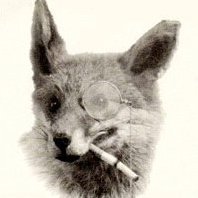
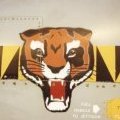




.thumb.jpg.0cb281983c298f55509ab7d9a06994bd.jpg)
.thumb.jpg.eca0c14e328767d0864cd6db01ca9ccf.jpg)
